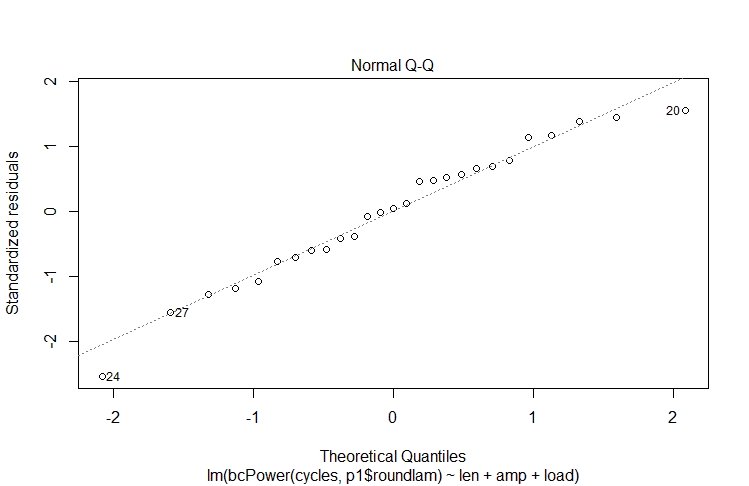有没有一种函数或软件包可以寻找最佳(或其中一个最佳)变量转换方式,以使模型残差尽可能符合正态分布?
例如:
frml = formula(some_tranformation(A) ~ B+I(B^2)+B:C+C)
model = aov(formula, data=data)
shapiro.test(residuals(model))
有没有一种函数可以告诉我们,哪个函数 some_transformation() 可以优化残差的正态性?
有没有一种函数或软件包可以寻找最佳(或其中一个最佳)变量转换方式,以使模型残差尽可能符合正态分布?
例如:
frml = formula(some_tranformation(A) ~ B+I(B^2)+B:C+C)
model = aov(formula, data=data)
shapiro.test(residuals(model))
有没有一种函数可以告诉我们,哪个函数 some_transformation() 可以优化残差的正态性?
library(car)
m0 <- lm(cycles ~ len + amp + load, Wool)
plot(m0, which=2)

# Box Cox Method, univariate
summary(p1 <- powerTransform(m0))
# bcPower Transformation to Normality
#
# Est.Power Std.Err. Wald Lower Bound Wald Upper Bound
# Y1 -0.0592 0.0611 -0.1789 0.0606
#
# Likelihood ratio tests about transformation parameters
# LRT df pval
# LR test, lambda = (0) 0.9213384 1 0.3371238
# LR test, lambda = (1) 84.0756559 1 0.0000000
# fit linear model with transformed response:
coef(p1, round=TRUE)
summary(m1 <- lm(bcPower(cycles, p1$roundlam) ~ len + amp + load, Wool))
plot(m1, which=2)

MASS::boxcox()。 - Ben Bolker